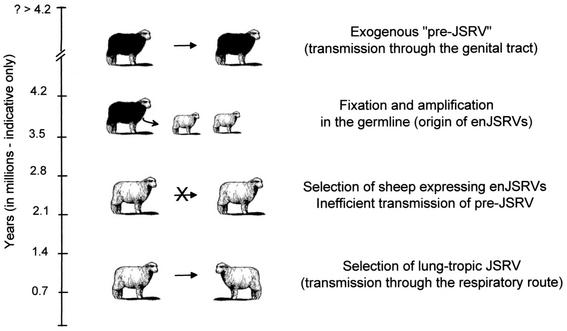FIG. 5.
Proposed model for sheep betaretrovirus evolution. The extensive expression of enJSRVs in the genital tract suggests that at least some of the ancestral exogenous forms of ovine betaretroviruses (“pre-JSRV”) may have been transmitted from sheep to sheep through coitus. Subsequent to becoming endogenous, the selection of respiratory tract-tropic exogenous betaretroviruses (like the current JSRV and ENTV) might have been favored by interference processes given by the expression of enJSRVs in the epithelium of the genital tract. Sheep shown in black represent sheep before the fixation of enJSRVs in their germ line. The time of endogenization shown in the figure reflects what has been estimated for the three known full-length enJSRV loci (21) and is not necessarily representative of all the enJSRV loci present in the sheep genome.

